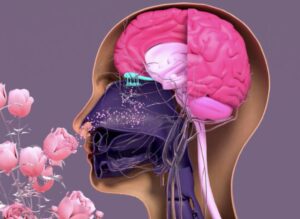What kind of water do you drink? Research suggests that our water supplies may be unsafe for cystic fibrosis patients
These findings highlight the potential dangers lurking in our water supplies, particularly for individuals with cystic fibrosis. Cystic fibrosis is a genetic disorder that affects the lungs and digestive system, making individuals more susceptible to respiratory infections. The presence of high levels of molybdenum and vanadium, along with sulfate, in the municipal water system poses a significant risk for these vulnerable individuals.

Research suggests that our water supplies may be unsafe for cystic fibrosis patients
Nontuberculous mycobacteria (NTM) pulmonary infections are a serious concern for people with cystic fibrosis. These infections can cause severe respiratory symptoms, leading to a decline in lung function and overall health. Identifying the factors that contribute to the incidence of NTM infections is crucial in order to develop effective prevention strategies.
The study’s findings suggest that the presence of molybdenum and vanadium, along with sulfate, in the water supply may act as catalysts for the growth and proliferation of NTM bacteria. These minerals and metals are known to have toxic effects on the human body, and their accumulation in the lungs can further weaken the already compromised respiratory system of individuals with cystic fibrosis.
It is important to note that the municipal water system is a primary source of drinking water for a significant portion of the population. Therefore, the potential health risks associated with these contaminants extend beyond individuals with cystic fibrosis. The general population may also be at risk of developing NTM infections or other waterborne illnesses due to the presence of these minerals and metals.
This study underscores the need for stricter regulations and monitoring of water quality, particularly in areas where high levels of molybdenum, vanadium, and sulfate are detected. Water treatment facilities should implement effective filtration and purification methods to remove these contaminants and ensure the safety of the water supply.
Furthermore, individuals with cystic fibrosis should be made aware of the potential risks associated with their water source. They may need to take additional precautions, such as using filtered or bottled water for drinking and cooking purposes, to minimize their exposure to these harmful substances.
In conclusion, the presence of high levels of molybdenum, vanadium, and sulfate in the municipal water system poses a significant risk for individuals with cystic fibrosis, increasing their susceptibility to NTM pulmonary infections. This study highlights the urgent need for improved water quality regulations and heightened awareness among both healthcare professionals and the general population regarding the potential health risks associated with contaminated water supplies.












